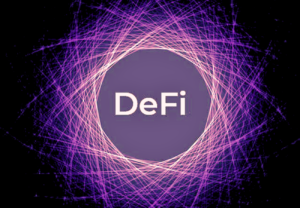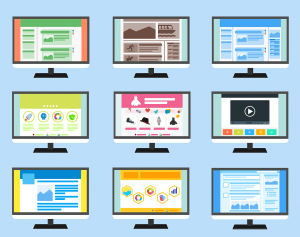The new Evolving Education landscape is undergoing a profound transformation, driven by technological advancements, shifting pedagogical paradigms, and a growing recognition of the importance of student engagement. In this era of rapid change, academic educators embrace innovative strategies to foster active student participation while creating a dynamic educational ecosystem.
As well as inclusive and responsive to the needs of diverse learners. In other words, education has evolved drastically from generation to generation. Humanity began storing and transmitting knowledge through word of mouth. As a result, this allowed them to pass information about animals, plants, and the land to each succeeding generation. The evolution of education is vital.
It’s marked by a shift from teacher-centered to learner-centered approaches. This transition involves creating an environment where students are no longer passive consumers but active co-creators of knowledge. Empowering students as active participants enhances their topic understanding. They can also quickly grasp the academic subject matter and develop critical skills.
Such as problem-solving, communication, and collaboration—indispensable skills in the modern world. A person’s education is theirs alone; with it, they feel safe and self-sufficient. With that in mind, this article delves into the evolving education landscape, exploring new avenues for student participation that empower them while enriching their learning experience and shaping their future.
The New Evolving Education Face: Beyond Passive Classroom Learning Culture
Traditionally, education has often been synonymous with passive learning, where students act as passive recipients of information delivered by educators. However, this paradigm is rapidly shifting as educators and institutions recognize that authentic learning occurs when students actively engage with content, collaborate with peers, and take ownership of their educational journey.
Formal education is said to have begun in Greece at around 4 BCE. — the word “school” comes from the Greek word “schole,” which means “leisure.” It provides insight into how education was perceived back then—an enjoyable activity rather than a chore. Today, the likes of Elon Musk have criticized formal education, deeming college degrees as a way of “prove(ing) that you can do chores.
To them, they’re not tools for learning. But educational systems have advanced. Wax tablets were amongst the earliest learning instruments used by the Romans. Today, digital tablets and electric stylus fill our classrooms and almost wholly replace pen and paper. Digital technology, comprising computers and the internet, represents the second primary wave of disruptive technology.
More so since the printing press. Such technology has completely revolutionized the potential for learning and teaching in more engaging and accessible ways, paving the way for “leisurely learning” as the Greeks intended it to be. On that note, journey with us as we travel through time to uncover the evolution of education technology and a glimpse into the exciting future of pedagogy.
Getting To Know And Understand The Overall Impact On Student Learning
While schooling served a functional purpose in Egypt, Greek education had a different aim. Considerably, there were aspects such as maintaining traditional pathways for specialized careers and tutoring occurring individually, with students being cared for by a mentor. The consequence was a Greek philosophy birth, whereby thinkers used education to inform their values and principles.
As a result, they understood the world much better. Generally speaking, for those able to join the ranks of thinkers, education served to advance the collective knowledge of Greece. Nowadays, education is perceived as a fundamental human right and a duty for governments to ensure access to primary education for all children regardless of background or financial well-being.
Furthermore, global literacy rates have climbed steadily over the last two centuries. In addition, the international average length of schooling is now drastically higher than a hundred years ago as more students obtain secondary and tertiary education. Educators are responsible not only for teaching students but teaching them how to learn as well. After schooling for years, here we are!
We have done quite a bit of learning how to be learners. This includes applying what we learned in school to real life, especially in science courses. We would have been baffled in Advanced Placement Biology if all of the evolution talks were cut from the curriculum. The transformation from passive learning to active participation yields many impactful student benefits.
Some of the benefits are:
- Increased Students Engagement: Active participation captures students’ attention, making learning more engaging and enjoyable. Students become motivated to delve deeper into subjects and explore diverse perspectives.
- Enhanced Critical Thinking: Interactive activities challenge students to think critically, analyze information, and develop reasoned conclusions. The ability to evaluate and synthesize information becomes a cornerstone of their intellectual growth.
- Improved Communication Skills: Student-led discussions and group activities nurture effective communication and articulation. Students learn to express their thoughts clearly, listen actively, and engage in constructive dialogues.
- Boosted Personality Confidence: Taking an active role in their education enhances students’ self-confidence. Students develop a sense of competence and self-assurance as they contribute ideas, collaborate with peers, and present their work.
- Real-World Challenges Preparation: Participating actively in diverse learning experiences equips students with the skills required for success beyond academia. The ability to collaborate, problem-solve, and adapt prepares them for the evolving complexities.
Thankfully, with the onset of “ed-tech” (educational technology), the future of educational equality is looking optimistic and less location-dependent. Schools in third-world countries are working around infrastructure constraints by leveraging free online videos. For regions that lack a quality internet connection, wireless technology and offline apps are promoting accessibility.
The Main Crisis And Evolving Education Avenues For Student Participation
Currently, the two main problems causing the widespread shortage of education are poverty and marginalization. Poverty is a crippling hindrance to education because many emerging countries are in crisis. They cannot grant the financial resources necessary to create schools, provide schooling materials or recruit and pay teachers’ wages. Similarly, another issue is the lack of political will.
Developing countries fail to fund education, perhaps due to corruption or other motives. Moreover, as schools in developing nations cannot pay or train teachers properly, any education students receive may often be inadequate or of poor quality because of poorly trained, underpaid teachers and overcrowding. There is also a lack of infrastructure, poverty, overcrowding, and segregation.
Notably, higher incomes, lower maternal and infant mortality rates, and educated women also have more personal autonomy for decision-making. However, according to UNESCO, an estimated 130 million girls between the ages of 6 and 17 are currently out of school. Those from the poorest families are likelier to be out of the classroom than affluent peers. Thus, more input is crucial.
Additionally, more problems include irregular school safety, harsh disciplinary policies enacted on students who are black or from ethnic backgrounds, and even the burgeoning distraction of technology on the learning experience. Due to these rampant issues, governments must enact policies to mitigate these faults. Fortunately, there are a few new game-changing technologies.
1. Project-Based Learning (PBL)
Project-based learning immerses students in real-world scenarios where they actively apply knowledge to solve complex problems. Through working on hands-on projects, students engage in research, critical thinking, and creative problem-solving, making learning a practical and meaningful experience.
2. Student-Centered Discussions
Encouraging student-led discussions shifts the focus from teacher monologues to interactive dialogues. Students articulate their ideas, engage in debates, and learn to respect diverse viewpoints, fostering a culture of active engagement and intellectual curiosity.
3. Peers And Group Collaborations
Collaborative learning environments promote peer interaction, where students share knowledge, exchange perspectives, and collectively construct understanding. Group activities enhance teamwork, communication, and leadership skills, preparing students for collaborative endeavors beyond the classroom.
4. Flipped Classroom Model Systems
Inverting traditional teaching, the flipped classroom model assigns instructional content as homework and dedicates class time to interactive discussions, problem-solving, and hands-on activities. This approach maximizes student participation as they actively learn during face-to-face sessions.
5. Incorporating Innovative Tools
Digital tools and platforms provide diverse avenues for student participation. Online discussions, virtual simulations, and interactive quizzes empower students to engage with content actively, bridging geographical barriers and offering flexible learning opportunities.
6. Support Service Learning
Integrating community service with academic learning bridges theory with practice. Students engage in real-world projects that address societal needs, cultivating empathy, social responsibility, and a deeper understanding of their study subjects.
7. Student-Driven Projects
Allowing students to choose their study topics and design their projects nurtures intrinsic motivation and ownership. Such autonomy empowers students to explore their interests, fostering a sense of agency and creativity. As educators explore new avenues for student involvement, platforms like Blooket Join are potent allies in creating dynamic, immersive, and enriching learning experiences.
The Best Practices In Fostering A Seamless Students Participation Culture
As per Madison Riley, teaching Charles Darwin’s Theory of Evolution is not about changing beliefs. In the same way, teaching students of all religions about the history of Christianity or Judaism, for example, does not inherently include preaching that religion’s beliefs, the theory of evolution, can be taught without sermonizing. Evolution is the change in organisms over generations.
By all means, evolution is a theory that is supported by an overwhelming amount of evidence. It is backed up by real-life examples, artifacts (fossils), research, and observations. Not only do the facts offer beneficial information to students, but science teachers can use this example of research to explain the scientific method and how to conduct one’s research. Watch and learn more in this video:
On the one hand, young people should not be taught to have a closed mind by omitting specific material from the curriculum because it does not align with personal beliefs. Instead, we should believe these students will use the information they gain in school to make informed decisions about the world. Furthermore, students should be respected as learners and free-thinking beings.
And therefore, they should not be treated as if they cannot handle the idea of evolution or make their own educated decisions. On the other hand, parents and educators should trust students to learn and apply the material to their lives however they choose. Be that as it may, to cultivate a culture of active student participation as education evolves, educators can adopt a few strategies.
Consider the following:
- Create Inclusive Environments: Foster an inclusive classroom where all voices are valued and heard. Encourage open dialogue, respect diverse viewpoints, and ensure every student feels comfortable contributing.
- Provide Varied Opportunities: Offer a spectrum of participatory activities that cater to different learning styles. Some students may excel in discussions, while others thrive in hands-on projects or technology-based tasks.
- Embrace Flexibility: Adapt teaching methods to accommodate students’ needs and interests. Flexibility allows educators to tailor activities that resonate with individual learners, promoting engagement and enthusiasm.
- Offer Constructive Feedback: Constructive feedback guides students’ growth and reinforces the value of their contributions. Encourage peer feedback as well, fostering a supportive community of learners.
- Empower Student Choice: Allow students a say in their learning journey. Providing opportunities for topic selection, project design, and collaborative partners empowers students to take ownership of their education.
Ideally, states should bear the cost of education, especially for children from poorer backgrounds. More affluent nations or institutions should provide economically challenged countries with funds and aid for this endeavor because it develops human capital. Communities must know the importance of educating girls and boys for optimal social success and economic growth.
Eventually, the future is in their hands, and we must ensure they are better prepared to accept it. In particular, awareness workshops and government programs must be catered to, especially in rural areas, to help uplift education for all. Moreover, minorities must not be neglected; states should pay attention to these regions, as equality in education guarantees a sustainable future.
In Conclusion;
To manage a society growing in complexity and scale, the Egyptians began a form of education similar to that observed in modern-day society, teaching typically wealthy, elite children mathematics, language, and other subjects. This naturally transpired at a social center rather than home, though royalty may have received private tuition to prepare them for their societal roles.
Notwithstanding, these early, rudimentary forms of education also served as a barrier to the lower classes. Only the elite would be granted access to the prestigious roles requiring education. Unfortunately, today’s standard statistics of female children receiving adequate education rob economies severely. This is because education for girls renders striking social and economic benefits.
As the educational landscape continues to evolve, embracing new avenues for student participation is paramount. Educators are architects of this education culture transformation, designing learning experiences that empower students to engage, collaborate, and thrive actively. Above all, the journey towards an educational future defined by student participation celebrates diversity.
It also helps to foster a love of learning and equips students with the tools to become lifelong learners and empowered global citizens. For beginners, Evolving Education is an inspirational and practical guide to shifting to a learner-centered approach. It clearly articulates how to redefine success, create powerful learning experiences, and support academics with enabling conditions.










Fantastic write ups. Cheers!
This is a very good write up, Kudos!!
Truly a good deal of useful advice.
Really a lot of superb knowledge.
You’ve made your point pretty nicely..
Comments are closed.